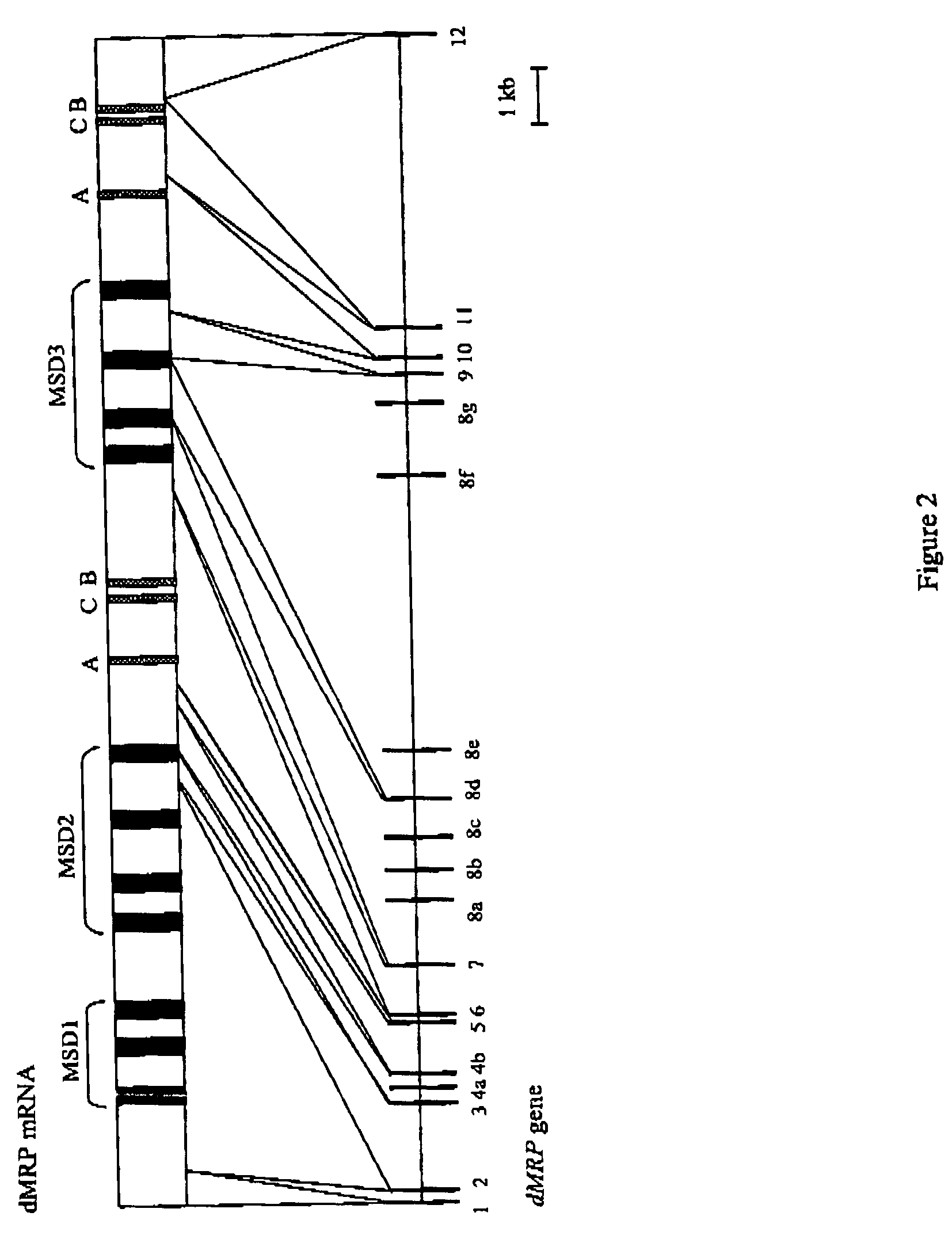Multidrug resistance proteins in Drosophila and Anopheles
a technology of multi-drug resistance and anopheles, which is applied in the field of recombinant dna technology, can solve problems such as not always equivalen
- Summary
- Abstract
- Description
- Claims
- Application Information
AI Technical Summary
Benefits of technology
Problems solved by technology
Method used
Image
Examples
Embodiment Construction
[0029]At the beginning of 2001, an international consortium organized the A. gambiae genome project, which now comes in line with the sequencing of the Plasmodium and the human genomes. Before the release of the whole sequence on (a web site) preliminary work on a BAC clone library was generated by Frank H. Collins, Univ. of Notre Dame, USA. The BAC library inserts ends were sequenced by the Genoscope (Evry, France) and representing the anopheline genome, allowed the finding of four copies of homologues of the Drosophila and human MRPs, which were further characterized. The study of the Drosophila gene had put in light a new splicing process in comparison to previously examined MRPs in several animals. Two exons are present as multiple copies, which potentially allows the insect to express as many as 14 different variants of the protein. This peculiar process was not retrieved in A. gambiae.
[0030]The present invention provides isolated nucleic acid molecules that comprise a nucleic...
PUM
| Property | Measurement | Unit |
|---|---|---|
| Temperature | aaaaa | aaaaa |
| Fraction | aaaaa | aaaaa |
| Molar density | aaaaa | aaaaa |
Abstract
Description
Claims
Application Information
 Login to View More
Login to View More - R&D
- Intellectual Property
- Life Sciences
- Materials
- Tech Scout
- Unparalleled Data Quality
- Higher Quality Content
- 60% Fewer Hallucinations
Browse by: Latest US Patents, China's latest patents, Technical Efficacy Thesaurus, Application Domain, Technology Topic, Popular Technical Reports.
© 2025 PatSnap. All rights reserved.Legal|Privacy policy|Modern Slavery Act Transparency Statement|Sitemap|About US| Contact US: help@patsnap.com



